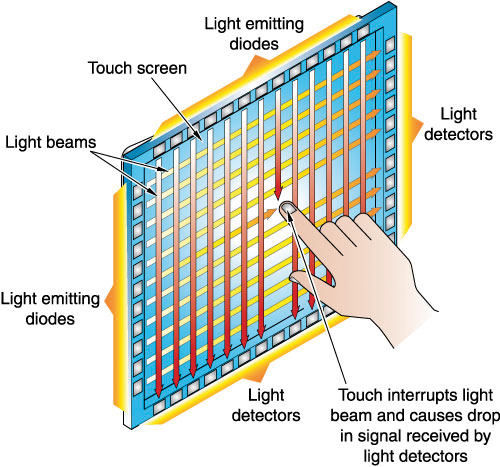Infrared (IR) — Grid
Sensor Materials
Glass or acrylic substrate, wrap-around-bezel frame, LED matrix
Principle of Operation
- LEDs create a grid of X and Y infrared light beams projected above the display and are detected by photo receptors on the opposite edge.
- Touch occurs when a finger or stylus blocks the beam from reaching light detectors.
- Controller’s constant X and Y axis scanning detects blocked light detectors and triangulates touch location.
Pros and Cons
| Pros | Cons |
| Functions with scratches and surface wear | Solid contaminants, moving liquids or obstructions may cause a false touch and may create dead zones until completely removed |
| Touch activated by bare finger, gloved hand, or a wide stylus | Does not scale easily (new layout required) |
| Transmission typically 90 % to 92 % | Beam spacing limits accuracy and stylus width |
| Touch occurs slightly above the actual surface resulting in possible touch parallax or an unintended touch response | |
| Requires a bezel design to house the LEDs and detectors | |
| Limited to two or three resolvable touches |
Content and images of 3M were reproduced with permission © 3M 2010. All rights reserved.

